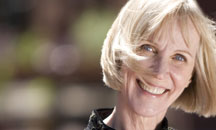I love studying the details of daily life more than any other aspect of the research. It's an endlessly fascinating subject.
I use the Net a great deal, although my main source of information continues to be books—both memoirs and accounts written during the period as well as historical texts. I record notes on computer, which makes it easy to search and find what I need, when I need it.
It was a difficult period for me to come to understand, in large part because of the intensely spiritual—as well as superstitious—out-look that was fairly universal at that time. Even the mathematician Descartes, founder of the empirical method, believed bad dreams were planted in his head by demons. This was a surprise.
Perhaps the hardest part of "time travel" is understanding the ways in which perception was very different from our own—as well as the ways in which it was very much the same.
What was the greatest challenge in writing a novel based on real people and events from the 17th Century?
Any novel based on fact faces a number of challenges: the greatest being crafting a story, a narrative arc out of random events. One has to find the story in the facts, and then allow that story to flower. Often that means letting go of the facts. It's difficult to be true to both, and ultimately the story is what matters most in fiction.
On another level, I feel that truth can be revealed in this way—an emotional truth that may not be evident in the bare facts.
On a practical level, logistics in the 17th century were never simple. Getting from point A to point B could prove to be extremely complex (at least from our perspective). Ideology, perspective: these were challenging to come to grips with. Intimate details of daily life: these are very hard to uncover. And what in fact did happen? There are, invariably, differing accounts. One has to become a sleuth.
Have you ever been to France yourself? If so, did you visit any of the locations mentioned in Mistress of the Sun?
I went to France three times while writing this book. I saw the chateau in which Petite grew up, saw where she was born in Tours, visited the convent (now a school of music) where her aunt Angélique was a nun. In coming to understand her life, I went to Amboise, Blois, Fontainebleau, Saint-Germain-en-Laye, Paris (touring the Louvre, the Luxembourg and Vincennes), Vaux-le-Vicomte, and—of course, several times over—Versailles. On-site research is essential when writing historical fiction—but it is also one of the great pleasures of the work.What interests you most about this era in history?
The era of the Sun King is enormously fascinating. Under the rule of Louis XIV, France emerged as a world super-power, politically, economically as well as culturally. Of special interest to me, are the more domestic details: the fact that the concept of being "in fashion" began at that time (and of course it had to be French).You must have discovered so many interesting people in your years of researching Mistress of the Sun. Do you plan to focus on one of these characters in future novels?
There are so many fascinating characters—so many fascinating stories—in this period. I will definitely be writing more about them.About this, another reader writes: "Are you going to write more stories about the court of the Sun King? You did such a great job with the historical details and as I have studied Louis XIV and his court — there are plenty of interesting stories to tell (including the adventures of the Princess Palatine, even La Grande Mademoiselle and Lauzun, a couple that united even after a prison term and old age only to break up over greed). You could even do a trilogy of Louis XIV's Mistresses — you've done La Vallière, next could be Montespan, then Maintenon (the king's mistress, then second wife). Or a novel on Princess Henrietta as she has a tragic back story with her father being killed, her brothers Charles and James, and she had several romances during her marriage to her cousin Monsieur that are interesting reading, including one lover who was her husband's boyfriend who falls for Henrietta and became a master of disguise to see her at any cost (De Guiche--who visited her as a fortune teller, a litter bearer and in a domino so he could romance her in Philippe's presence at a masked ball).
What wonderful suggestions! I am considering writing a novel about Athénaïs (Montespan), but it might focus on her first engagement more than her relationship to the king. I'm not sure. It could also be a story told from the point-of-view of Des Oeillets, her maid who was the go-between between Athénaïs and Voisin, the convicted poisoner.
I love the De Guiche stories, and in fact wrote many scenes of him hiding in the fireplace and disguised as a fortune-teller, etc., but these scenes, like many, many others, now lodge in my cut file.
As this reader points out, there is a wealth of wonderful stories to be told. The hard part is choosing.

No comments:
Post a Comment